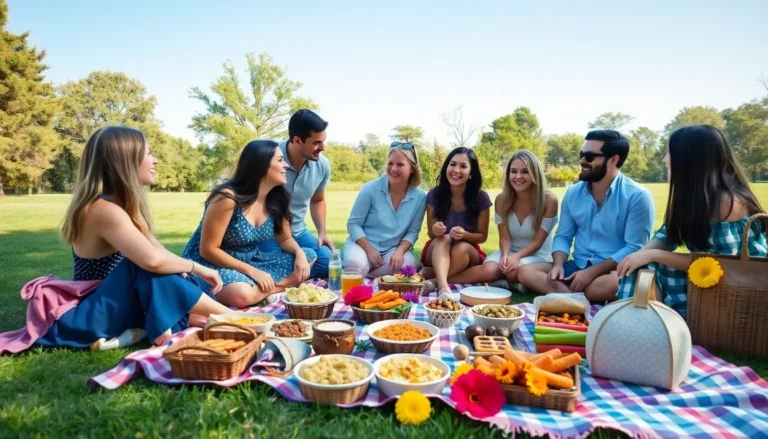When you hear the term ‘#Redwebzine,’ you might conjure up images of a vibrant community buzzing with creativity and influence. This digital space has evolved into something remarkable, akin to that friend who comes to every party uninvited but somehow ends up being the life of it. The #Redwebzine isn’t just a trend: it’s a phenomenon that reshapes how we engage with content and one another. But what makes it tick? Let’s jump into the intriguing realm of #Redwebzine social and explore its origins, growth, and the future it holds.
Table of Contents
ToggleUnderstanding Redwebzine: Origins and Evolution

#Redwebzine started out as a modest platform aimed at amplifying voices that often went unheard. Launched during a time when digital content was rapidly evolving, it quickly captured the imagination of an audience craving more innovative and diverse narratives. Over the years, it has transformed from a simple online magazine to a robust social ecosystem that attracts writers, artists, and creators of all stripes. This evolution reflects not just a shift in technology but also a cultural movement that champions authenticity and diversity in storytelling.
The name itself, ‘#Redwebzine,’ symbolizes a coming together of varied shades of ideas, opinions, and perspectives. Initially, the focus was on written content, but it now encompasses vibrant visual storytelling and multimedia experiences, creating a complex web of influences and interactions that keep the community buzzing.
The Role of Social Media in Redwebzine’s Growth
Social media has played a pivotal role in catapulting #Redwebzine into the digital spotlight. Platforms like Twitter, Instagram, and TikTok serve as lifelines, connecting creators with audiences in ways that traditional media simply can’t match. These platforms not only help disseminate content but also foster conversations around it.
Imagine a tweet that goes viral overnight, sparking debates and discussions while showcasing the latest piece from #Redwebzine. Such virality opens doors, inviting new voices into the fold. With hashtags like #Redwebzine trending, users find themselves diving into content that resonates deeply with them. This synergy between social media and #Redwebzine’s platform encourages a feedback loop. Creators can adapt their work, respond to community feedback, and even collaborate with others, fostering a dynamic exchange of ideas.
Key Features of Redwebzine Social Engagement
One of the standout features of #Redwebzine social engagement is its emphasis on community-driven content. Users aren’t merely consumers: they’re active participants in shaping narratives. This fluidity fosters a sense of ownership among members, making them more likely to share and promote content.
Also, interactive elements like polls, Q&A sessions, and live streams encourage real-time engagement. These activities keep the content fresh and invite deeper participation, allowing users to voice their opinions directly. This feedback often influences what gets produced next, making it a wonderfully collaborative environment. Brands and creators alike benefit from this dynamic, tapping into trends and preferences that come straight from their audience.
Community Building Through Redwebzine
Community building is a cornerstone of the #Redwebzine experience. Unlike many digital spaces that prioritize individualism, this platform encourages connections among its members. forums, discussion groups, and collaborative projects enable users to find like-minded individuals, turning the community into a supportive network.
Events, whether virtual or in-person, further solidify these bonds. They provide a space for creators and audiences to mingle, brainstorm, and even celebrate their successes together. It’s this sense of community that invites users to stay, share, and collaborate long-term, continually enriching the overall tapestry of #Redwebzine.
Content Types and Trends in Redwebzine Social
A mosaic of content types characterizes #Redwebzine social. From thought-provoking articles and opinion pieces to vibrant visual art and podcasts, there’s something for every taste. Trends also shift fluidly: for example, as societal interests evolve, so does the content itself.
Currently, there’s a rising trend towards ephemeral content, reminiscent of stories on Instagram and Snapchat. Short-form videos, snippets, and memes are gaining traction, as they capture quick attention spans while still delivering meaningful messages. Creators adapt to these trends by experimenting with new styles and formats, ensuring their work remains relevant and relatable.
Challenges and Criticisms of Redwebzine Social
Even though its numerous strengths, #Redwebzine social isn’t without its share of challenges. One significant issue is the overwhelming volume of content that can dilute quality. With so many voices vying for attention, standout pieces may get lost in the shuffle. Quality control becomes a concern as the community expands.
Also, navigating a diverse crowd can sometimes lead to misunderstandings or conflicts, particularly when differing opinions clash. Establishing guidelines that promote constructive dialogue while allowing for open expression is essential for the platform’s health. Criticisms emphasizing the need for moderation and better curatorial practices prompt discussions on improving the overall community experience.
The Future of Redwebzine and Its Social Influence
Looking ahead, the future of #Redwebzine appears promising. As digital landscapes continue to evolve, adaptation will be key. Innovations in technology, such as augmented reality and artificial intelligence, may further enhance user experiences, offering fresh ways to interact with content.
Also, the growing emphasis on inclusivity and representation in media suggests that #Redwebzine will remain at the forefront of these discussions, driving its relevance in varied communities. As it continues to evolve, the platform’s social influence is likely to expand, facilitating connections that transcend geographical boundaries.






